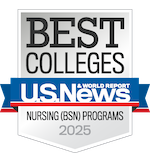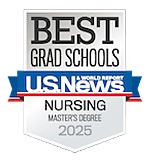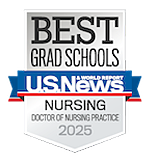UMSN’s Dr. Barbara Brush is using a new leadership position to change perceptions, practices, and policies about population health, including the way it’s taught.
October, 2013
“I knew I wanted to practice in the community from the moment I entered my BSN program, but, like many other places, I wasn’t introduced to community health nursing until my senior year,” says Barbara Brush Ph.D., ANP-BC, FAAN. “If we emphasize nursing’s role in acute care throughout the curriculum and wait until the end to explore nurses’ community health roles, we’re telling students that community doesn’t hold as much value.”
 That’s why Dr. Brush, an associate professor and nurse practitioner, plans to utilize her new position as UMSN’s Carol J. and F. Edward Lake Term Clinical Professor in Population Health to expand linkages between nursing and the community in the classroom, in clinical practice, and in science development. “Population health should be the framework for nursing more broadly; everything we do and everywhere we do it should fall under its umbrella,” says Dr. Brush.
That’s why Dr. Brush, an associate professor and nurse practitioner, plans to utilize her new position as UMSN’s Carol J. and F. Edward Lake Term Clinical Professor in Population Health to expand linkages between nursing and the community in the classroom, in clinical practice, and in science development. “Population health should be the framework for nursing more broadly; everything we do and everywhere we do it should fall under its umbrella,” says Dr. Brush.
Dr. Brush’s vision comes from more than three decades of experience practicing and conducting research with communities using a community-based participatory approach (CBPR). While at Boston College, she created the nation’s first clinical practice model utilizing nurse practitioners and ministers to care for homeless men. Her current research with homeless families in Detroit involves community and academic partners across health and social disciplines because, she notes, “If the community doesn’t participate in the development of the kinds of care they need, interventions won’t be meaningful or sustainable. They have to be built together.”
Dr. Brush also notes that “population health includes a broader consideration of social  determinants that may lend to illness,” something that is evident in her current practice at the Hope Medical Clinic in Ypsilanti, Michigan, which provides primary care services to the uninsured. “Nursing is much more than giving an injection or patching up a wound. It’s about a comprehensive understanding of the whole person and the ways in which their environments, their families, and their unique life situations impact their quality of life.”
determinants that may lend to illness,” something that is evident in her current practice at the Hope Medical Clinic in Ypsilanti, Michigan, which provides primary care services to the uninsured. “Nursing is much more than giving an injection or patching up a wound. It’s about a comprehensive understanding of the whole person and the ways in which their environments, their families, and their unique life situations impact their quality of life.”
As for her achieving her goals as the school’s Lake Professor, Dr. Brush says “We all want to have impact. For me, the impact is, can I create models of care and also inspire students and other people to carry that work forward?”
Dr. Brush says she was recently thinking of former students who are now working in and leading community health initiatives. “As an academic in a research institution, you often worry about metrics--having enough publications and grants and things like that. Knowing that my students are doing amazing work in underserved communities may not be readily measurable, but knowing that I may have inspired that course of action is enough for me.”
Dr. Brush believes the momentum for a stronger focus on population health is growing, especially due to the implementation of the Affordable Care Act. “Nurses are being called to work with other disciplines and community partners to develop and test evidence-based models of care that are culturally and contextually sensitive and work in the real world. The community is the real world.”





